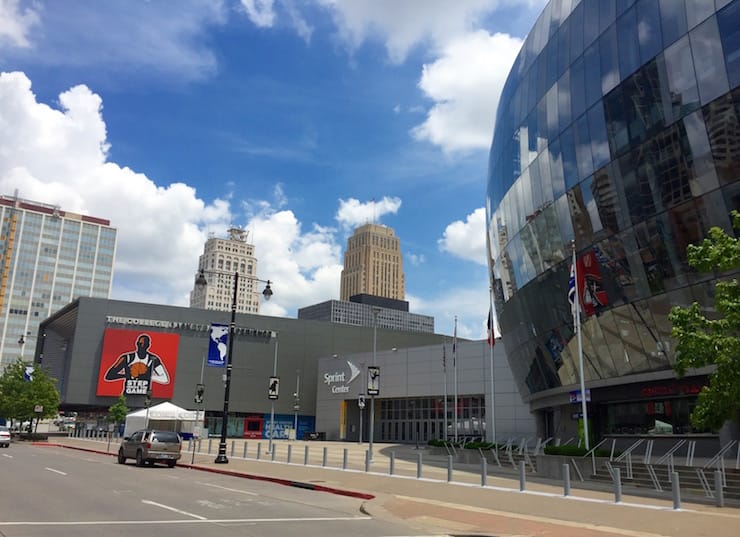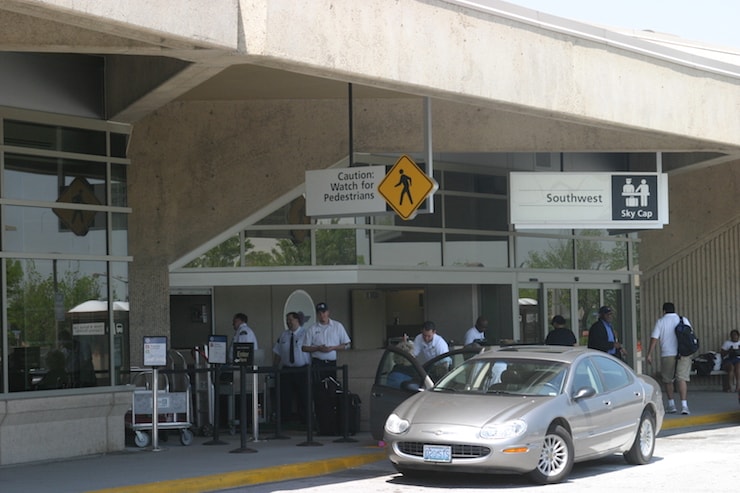Sprint Center Celebrates 10 Years as Downtown Anchor, Result of Bold Mayoral Push with Lessons for KCI Campaign

Published October 16th, 2017 at 12:15 PM
By Kevin Collison
It was a huge gamble when it was first proposed, but 10 years later, the Sprint Center has yielded an equally huge payoff for downtown, drawing 11 million visitors and generating an estimated half-billion dollars in economic benefits to the city.
Last week, Los Angeles-based Anschutz Entertainment Group, the operator of the arena, issued a release listing the facility’s milestones since it opened with a free open house Oct. 10, 2007 followed by a concert three days later by Elton John.
The challenging back story behind the $276 million arena still resonates today as the city tries to persuade the public on the merits of another huge public project, a new terminal at Kansas City International. That vote is scheduled Nov. 7.
Ten years ago, I did a series of interviews with key figures behind the early 21st Century renaissance of downtown and the campaign to build the Sprint Center. Looking back, they offer a window to understand how the Sprint Center got done, and perhaps some lessons for the KCI debate.
At the time, former Mayor Kay Barnes told me she had been thinking about the need for a new arena before she ran for mayor in 1999 while serving on the Kansas City Sports Commission.
The Big 12 Men’s Basketball Tournament, a longtime city sports fixture, was unhappy with Kemper Arena. Sound familiar, Southwest Airlines?
“While I was on the (sports) board, there was a recognition and discussion that Kemper was more and more problematic,” she said.
“We were getting that feedback from the Big 12. We were getting that feedback related to booking concerts and so on.”
Barnes key political advisor at the time, the late Steve Glorioso, who passed away last month, recalled then “she didn’t have a path, she had a vision.
“In her early musings about revitalizing downtown, she always saw the arena as a big part of it…but it always got a cool reception, even among her closest advisors.”
That observation was confirmed by the late Pat Gray, another of Barnes close political confidants, who died in 2015.
“In the 2003 re-election campaign, we polled the downtown arena because she wanted it from day one and it was terrible,” Gray recalled then. “It polled 40 percent or something like that.
“We told her on her re-election in 2003, don’t even talk about the arena, it’s bad.”
Barnes followed their advice, but after winning re-election easily, she resumed her push for a new arena.
“When the election was over, she decided ‘I’m going ahead with a new arena regardless of what the polling shows, but I’ll try to do it without a tax increase,'” Glorioso recalled. “It would have never passed with a sales tax or any local tax.”
The solution was to make outsiders pay for it through a combination of raising the hotel bed tax by $1.50 per night, and the daily car rental tax by $4. Even so, Glorioso said polls showed that only bumped up support to 50 percent of the voters.
It helped when Sprint decided to pony up $1.7 million annually for the 25-year naming rights. A major breakthrough occurred when Barnes persuaded AEG to support the project.
Ordinarily, a global entertainment juggernaut like that, its facilities include the Staples Center in LA and the O2 arena in London, would have little interest in a comparatively small market like ours.
But the stars were aligned for a match between AEG and Kansas City.
Barnes knew Phil Anshcutz, the founder of the company, from their days together at the University of Kansas. Tim Lieweke, the company’s president at the time, had lived here when he and his brother ran the old Kansas City Comets indoor soccer club in the 1980s.
“Kay was an unbelievably gifted sales person and passionate ambassador for Kansas City,” Lieweke recalled in 2007. “We sat down and had conversations about the deal. In short order we went from 5 to 10 to 20 to $50 million.”
AEG ultimately kicked in $53.2 million in return for a 35-year contract running the Sprint Center.
But even with Sprint and AEG, the biggest lift was winning voter approval for the car rental and hotel bed tax increases. The election was scheduled for Aug. 3, 2004.
Enter Enterprise, the St. Louis-based rental car giant.
Glorioso recalled the firm was concerned cities around the country were beginning to use car rental fee increases to help build stadiums and arenas, and had decided to make a big stand to stop that trend in Kansas City.
“All of a sudden, there was a campaign going on,” he said.
“Pat (Gray) called one morning and said ‘what do you think about making Enterprise the bogeyman?’ We could make it a Kansas City-St. Louis thing. He took a camera crew to St. Louis.
“You won’t believe it, we’re in downtown and they’re having a concert under the (St. Louis) Arch sponsored by Enterprise. He said ‘I cannot believe how lucky we are.”
Glorioso continued, “By late July, this community was electrified. It changed the whole tenor, we were relatively shameless. We played off the ’85 World Series, the whole looking down our noses at us. People in St. Louis don’t think there’s a rivalry. We do.
“We ended up spending $980,000 and I think they ended up spending $1.2 million,” he said.
City voters wound up supporting the fee increases overwhelmingly.
“What she (Barnes) did was turned the project into a cause and that’s what won the election,” Glorioso said.
Lieweke observed during his 2007 interview, “Kansas City has gotten more for their money than any other arena built in the last 10 years.”
Fast-forward, the Big 12 Men’s Basketball Tournament continues to be happy with the Sprint Center, it’s locked in through 2020 and has played there consecutively since 2010.
As for concerts, it’s consistently recognized by Pollstar Magazine as among the world’s busiest, ranking eighth in the U.S. in its latest issue.
While an arena is not a billion-dollar airport terminal, the parallels are there.
Both projects involve(d) obsolete facilities loved by some locals but loathed by most users who know the current national standards; both projects polled poorly in the beginning, and the funding solutions for both involve(d) no local taxpayer money.
The key difference is the politics, and whether the proposed new KCI terminal will be backed with the same enthusiasm and feistiness, the “cause” Barnes and her team embraced in 2004.
We have three weeks to find out.

Voters will have a chance in November to replace the obsolete terminals at KCI with a new single terminal.


